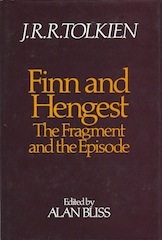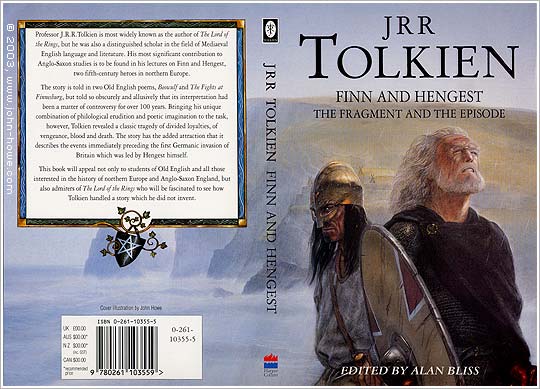

He and his brother Horsa (the names meaning "stallion" and "horse") were legendary leaders of the first Anglo-Saxon immigrants to Britain as mercenaries in the 5th century.įinn and Hengest is based on an edited series of lectures Tolkien made before and after World War II. Hengest has sometimes been identified with the Jutish king of Kent. It is not a work of the Middle-earth legendarium.įinn and Hengest are two Anglo-Saxon heroes appearing in the Old English epic poem Beowulf and in the fragment of "The Fight at Finnsburg".

It was published again by Houghton Mifflin in 19. This book will be of interest not only to students of Old English and all those interested in the history of northern Europe and Anglo-Saxon England, but also admirers of The Lord of the Rings who will be fascinated to see how Tolkien handled a story which he did not invent.Finn and Hengest is a study by J.R.R Tolkien of a Medieval story, edited by Alan Bliss and published posthumously in book form as Finn and Hengest: The Fragment and the Episode in 1983, by George Allen & Unwin. The story has the added attraction that it describes the events immediately preceding the first Germanic invasion of Britain which was led by Hengest himself. Tolkien's original and persuasive solution of the many problems raised by the story ranged widely through the early history and legend of the Germanic peoples. Bringing his unique combination of philological erudition and poetic imagination to the task, however, Tolkien revealed a classic tragedy of divided loyalties, of vengeance, blood and death. The story is told in two Old English poems, Beowulf and The Fights at Finnesburg, but told so obscurely and allusively that its interpretation had been a matter of controversy for over 100 years.
.jpg)
His most significant contribution to Anglo-Saxon studies is to be found in his lectures on Finn and Hengest (pronounced Hen-jist), two fifth-century heroes in northern Europe. Professor J.R.R.Tolkien is most widely known as the author of The Hobbit and The Lord of the Rings, but he was also a distinguished scholar in the field of Mediaeval English language and literature. Tolkien's famous translations and lectures on the story of two fifth-century heroes in northern Europe.


 0 kommentar(er)
0 kommentar(er)
